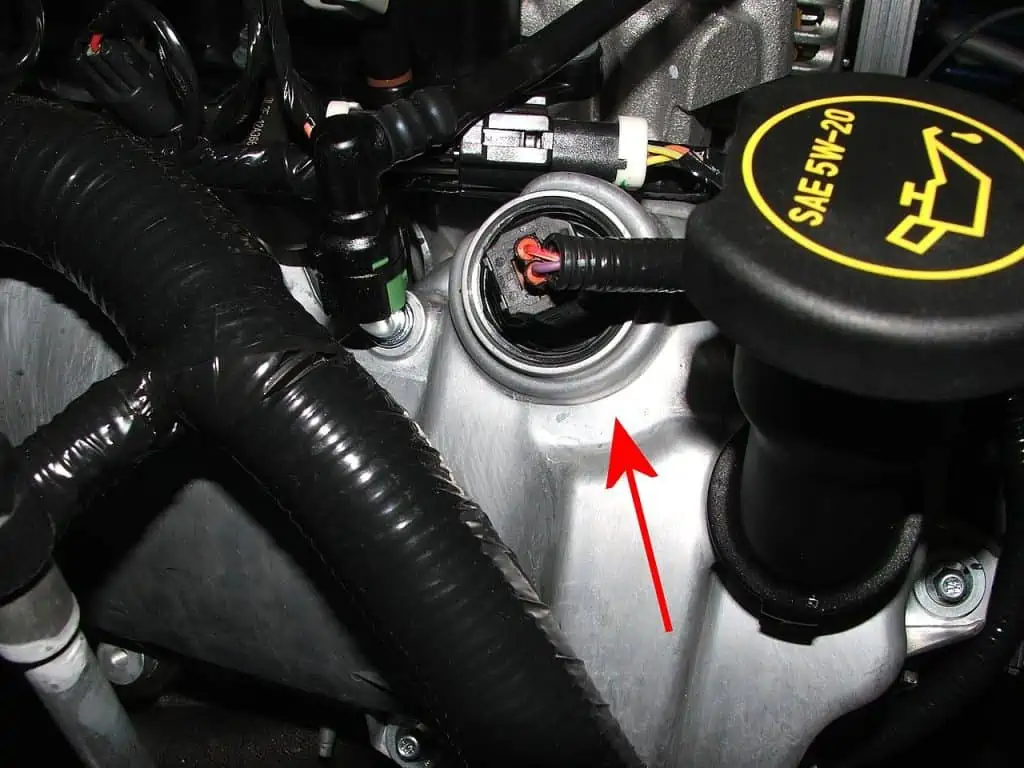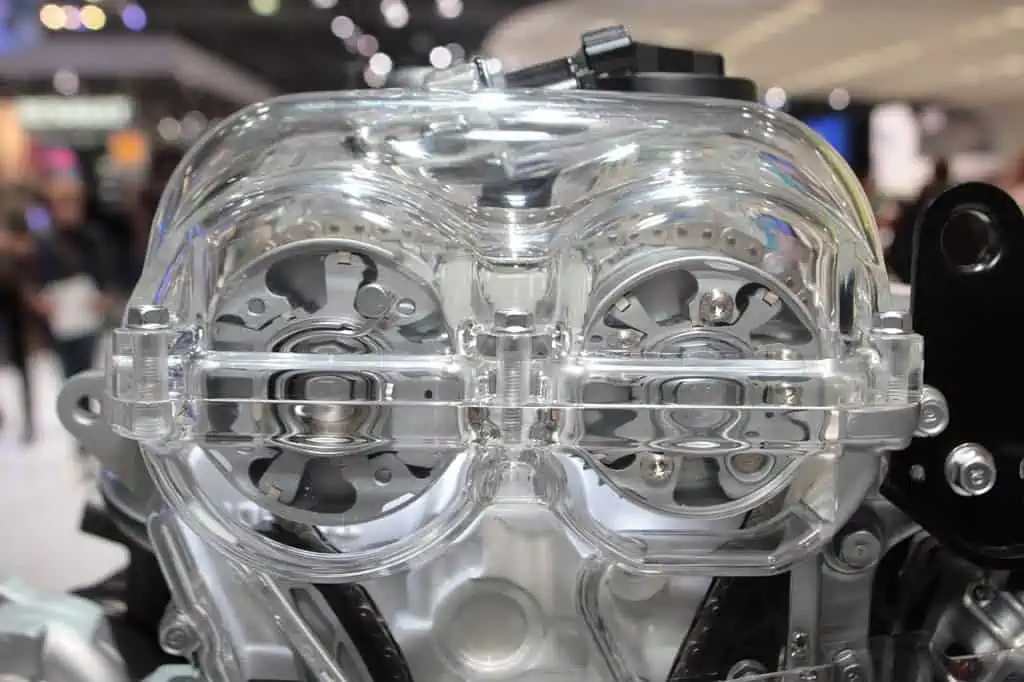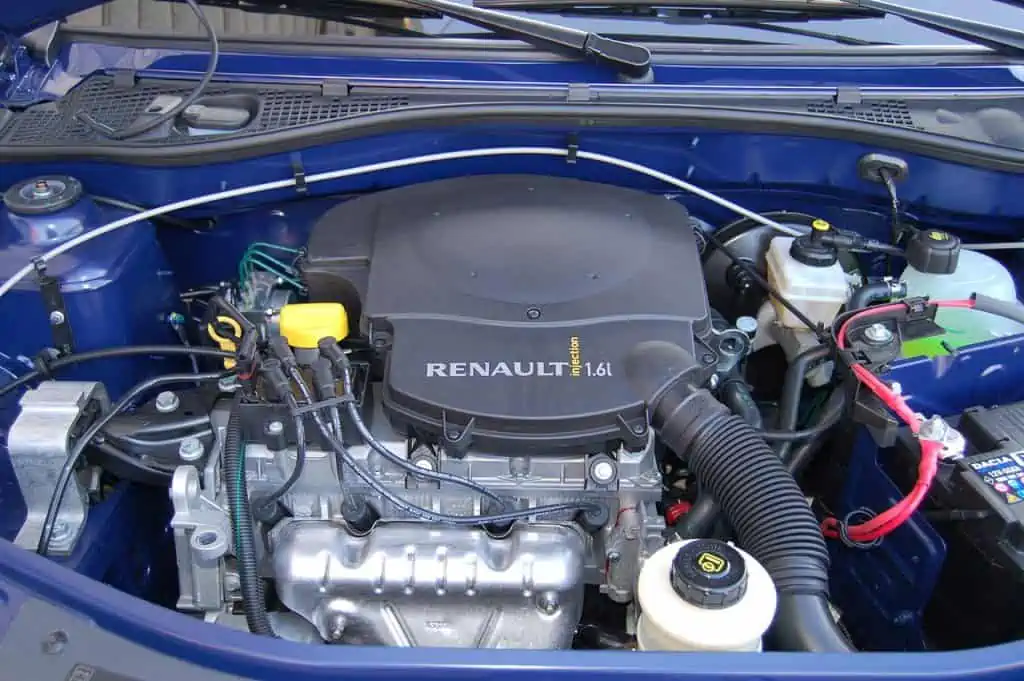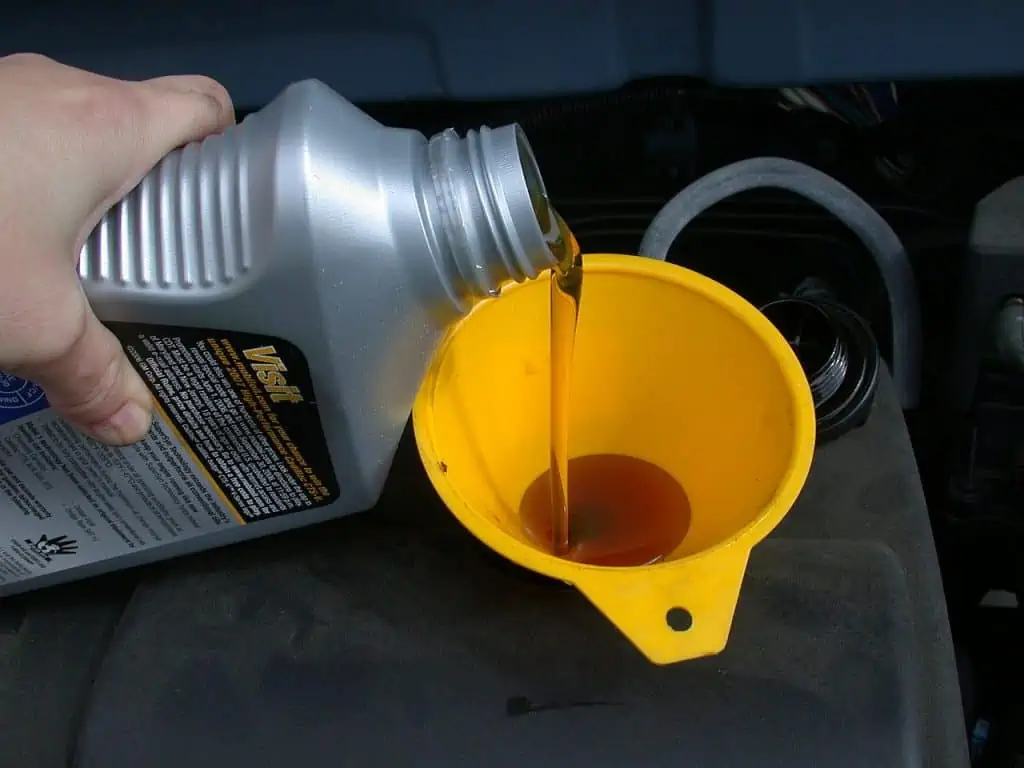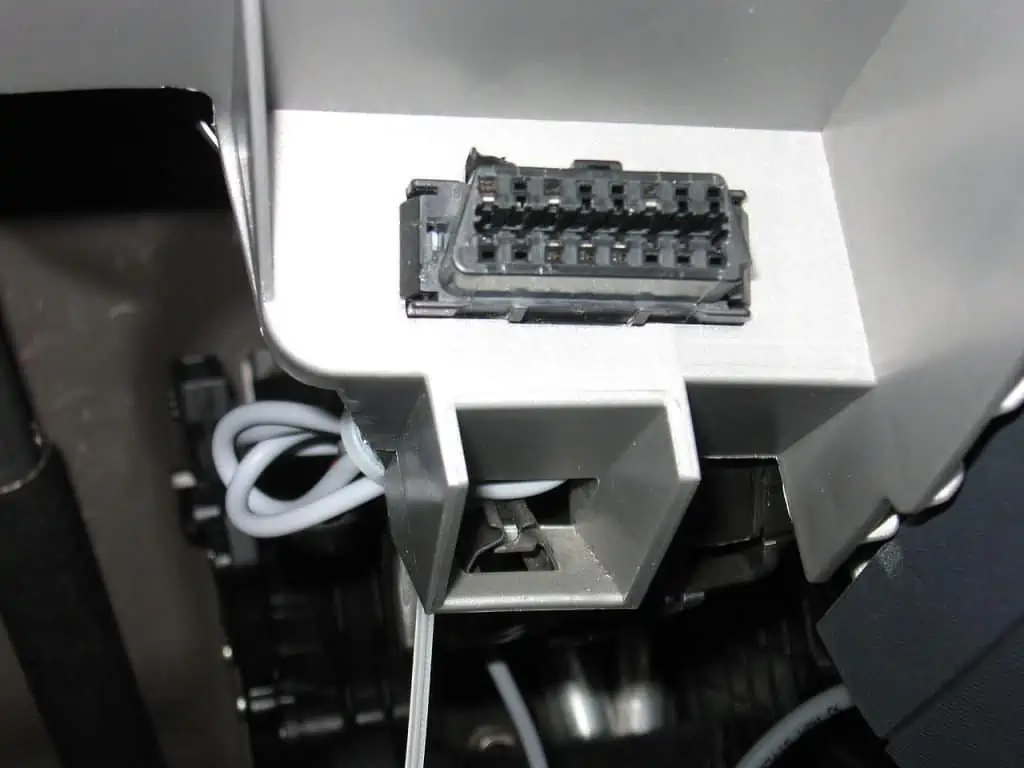Variable valve timing (VVT) is a component that is included in car engines. A fully functional vehicle cannot operate without an engine, but when the situation is the opposite, the P0013 code may be present. It will become impossible to make your car work without a hitch. Your car’s ability to operate smoothly can be affected by error code P0013.
A P0013 engine code denotes a worn-out or compromised solenoid control circuit or variable valve timing (VVT) solenoid. To avoid further engine damage or a breakdown while driving, you must have your car inspected by a professional as soon as possible.
Engine codes are a way for the computer in your car to inform you and your mechanic that there is an issue with the engine. They are also referred to as diagnostic trouble codes (DTCs). You’ll need an OBD-II code reader to read DTCs, but any reliable mechanic ought to have one on hand.
The letter and string of numbers you receive after reading your check engine light with an OBD2 scanner or diagnostic tool won’t mean much to the untrained eye. The severity of a code P0013, however, and what does it exactly mean? More importantly, will it cost you a fortune to fix it and how can you do it?
Even though code P0013 is quite serious, there are occasionally some tips and tricks you can use to repair your car on a budget. In this comprehensive guide, we’ll go over everything you need to know to identify and ultimately fix a P0013 code.
Definition for P0013
Short or open Exhaust Camshaft Position in Oil Control Valve (OCV) (Bank 1).
What Does the Code P0013 Mean?
The Diagnostic Trouble Code (DTC) P0013 is referred to as P0013. Exhaust “B” Camshaft Position Actuator Circuit/Open (Bank 1) or “P0013 exhaust camshaft position actuator circuit open bank 1” are the terms used to describe these devices. The code is a generic OBD-II term associated with the variable valve timing (VVT).
The variable camshaft timing solenoid by Metroplex~enwiki / CC BY-SA 3.0. A worn-out or compromised solenoid control circuit or variable valve timing (VVT) solenoid is indicated by the engine code P0013. You should get your automobile checked out by a mechanic as soon as you can to prevent more engine damage or a breakdown while you are driving.
Variable valve timing allows the camshaft to self-adjust to the desired setting while the engine is running. The management of fuel and performance efficiency is improved by this process.
The timing of the valves is fixed in conventional engines. However, in an engine with VVT, the camshaft position can be changed, changing the timing of the valves. As a result, either performance or fuel efficiency improves, or both.
The VVT solenoids and camshaft actuators also referred to as phasers, are the main elements of the VVT system (also known as camshaft position actuator solenoid valves).
The solenoid valve on the camshaft position actuator regulates the oil flow to the actuator, which advances or retards the camshaft.
The car’s main computer also referred to as the powertrain control module or PCM regulates solenoid operation. If the camshaft actuator solenoid or its circuit is detected to be malfunctioning, the P0013 error code is logged.
For optimum performance, modern vehicles fine-tune the engine timing using an electronic circuit. To maximize fuel efficiency and power output, the system controls actuators to open and close the intake and exhaust valves of your engine using data from the camshaft position sensor and a variety of other inputs.
When everything is working as it should, fuel economy is much better than it would be with just a regular camshaft. Your check engine light will illuminate, and you’ll either receive the code P0010 or P0013, if those sensors aren’t functioning properly or if your ECU determines that the camshaft position sensor is reporting an incorrect reading.
The only distinction between the two sister codes is the particular actuator that isn’t responding as expected.
Why Does Code P0013 Occur In Cars?
P0013 code appears on various labels from various automakers, leading to additional likely causes depending on your brand or model.
Exhaust camshaft actuator solenoids failing to properly move oil to exhaust the engine at the required rate results in P0013 engine codes. This is frequently brought on by dirty engine oil obstructing the VVT solenoid screen.
The solenoid on the exhaust camshaft actuator manages the oil flow to the actuator. In turn, the actuator accelerates or decelerates the camshaft, allowing exhaust to leave the engine at various rates. Most engines operate at a fixed rate for this process, but those with a VVT system can change it to improve performance and fuel efficiency.
The following are some typical causes of p0013 code problems:
1. Overly High Engine Oil Sludge
It is unquestionably P0013’s most frequent cause. However, excessive oil sludge does not appear anywhere. You won’t need to worry about it if you routinely get your oil changed.
However, a P0013 code is frequently the result if it has been 25,000 miles or more since your last oil change.
The Variable valve timing by DmitryKo / CC0. The oil flow and pressure must be enough for the VVT systems to perform at their peak levels. If the oil level is low, fill it up and reset the code before starting the vehicle. The issue has been resolved at its root if the code doesn’t run.
2. Wearing Timing Parts
Your engine’s timing parts deteriorate over time, so you must replace them regularly to keep everything operating smoothly. The suggested service intervals are listed in your service manual. You might have discovered the issue if you went over the intervals.
If you hear a ticking sound, it might be an indication that your timing parts are worn, which would result in the code P0013. The timing chain, timing belt, camshafts, and crankshaft are some of the timing components. Your engine’s smooth operation depends on these components working together.
3. Broken Camshaft Sensors
A damaged camshaft sensor may result in a P0013 code and the check engine light illuminating. A malfunctioning camshaft sensor may occasionally also result in engine misfires, rough idling, or stalling. You can inspect the sensor yourself if you think it might be the cause of the problems with your car.
The code informs you that the actuator isn’t functioning as a result of a sensor issue. Why not, therefore, check the sensors? Because sensors frequently malfunction, it’s not unusual for a camshaft sensor to stop working later in a car’s life.
4. Blown Fuse or Wiring Issue
Wiring problems aren’t very common, but they do happen occasionally. Make sure everything is receiving the appropriate amount of power if your maintenance schedule is up to date and the camshaft sensors are functioning as they should.
Verify that the sensors are receiving power and that no fuses are blown. You have a wiring problem if the fuse is functioning properly but the sensor isn’t getting power. You’ll most likely need to replace the entire harness unless you’re an electrical whiz.
5. Contaminated Engine Oil
The dirty engine oil may be the cause of your P0013 error code. A check engine light may come on and the engine may run less effectively when the oil is dirty. The best way to avoid this is to change your oil and filter as recommended by the manufacturer regularly.
6. Reduced Oil Pressure
Code P0013 may be brought on by low oil pressure. When the oil pressure sensor notices that the oil pressure is too low, this code is set off. It might be caused by an oil system leak, a problem with the oil control valve, or an obstruction in the oil filter.
7. A Malfunctioning Solenoid Actuator
A broken actuator solenoid may be to blame if your car’s engine won’t start or stalls and won’t restart. When it malfunctions, the engine cannot function properly because this part is in charge of opening and closing the engine’s intake valves. It may cause the code P0013 to appear, and if it does, the actuator solenoid needs to be changed.
8. A Malfunctioning ECM
The most likely explanation for a P0013 code is that your ECM is malfunctioning. This might be the result of a wiring issue or a lack of power going to the ECM.
The Variable Valve Timing with intelligence by Victuallers / CC BY-SA 3.0. P0013 engine codes are caused by exhaust camshaft actuator solenoids that are unable to flow oil to exhaust the engine at the desired pace. This is typically caused by contaminated engine oil clogging the screen of the VVT solenoid.
What Symptoms Represent Error Code P0013 In a Car?
You risk endangering the camshaft actuator solenoid valve control circuit if you ignore warning signs of impending issues.
You can’t take a chance with the engine of your car. Therefore, be on the lookout for these p0013 symptoms:
1. A Reduction In Engine Performance
There is no way for your ECU to get the most power out of each engine rotation if it is unable to change the intake and exhaust timing. This implies that to achieve the same results, your engine will have to work harder.
You’ll observe a decline in acceleration as well as a reduction in overall engine power. The degree to which engine performance is impacted depends on how serious the problem is.
2. An Abnormal Growth In Fuel Consumption
The timing and fuel efficiency of camshaft actuators are optimized when everything is running smoothly. Therefore, it is not surprising that the fuel economy will suffer if there is a systemic flaw.
Although you might not immediately notice a noticeable increase in fuel usage, the longer you wait to address the issue, the more you’ll start to notice a decrease in fuel economy.
3. Troubles In Starting the Engine
If your engine is having trouble starting, code P0013 may be the cause. This error code denotes a problem with the camshaft position sensor. The engine control unit receives signals from the camshaft position sensor, which tracks the camshaft’s position. The engine may have trouble starting if this sensor isn’t operating correctly.
Remember that you shouldn’t always anticipate the same symptoms. When it stops moving, they most likely alter as the camshaft timing position does. No matter which P0013 or P0014 code you discover, make sure the camshaft timing is broken.
Is the Error Code P0013 a Serious Problem In a Car?
A P0013 error code needs to be fixed right away to prevent severe and permanent engine damage. A P0013 error code indicates that the timing in your car isn’t operating properly, which can cause misfires and a host of other performance problems.
While a P0013 code can temporarily allow you to drive, it is best to have it fixed right away. It’s best to drive the car as little as possible while you wait for repairs.
The longer it takes to fix the issue, the worse it will get and the more likely it is that serious engine damage will happen.
The moderate repair case P0013 might not need immediate attention. However, if you decide to keep driving while the P0013 error code is active, you will endure the following;
Engine hesitation and rough idling. High fuel efficiency and carbon buildup in the valve compartment are to be expected. Long-term driving with this problem may result in PCM malfunction.
When P0013 is disregarded for a long time, it becomes serious. Your engine damage could put a hefty repair bill on the table. Unpleasant outcomes will occur if your car runs at the incorrect timing, which is the primary indication of the p0013 code. No matter what brand of car you drive, you must act quickly to fix any p0013 code issues.
A car’s internal combustion engine by Huhu Uet / CC BY-SA 3.0. Code P0013 might be to blame if your engine won’t start. This error code indicates an issue with the camshaft position sensor. The camshaft position sensor, which keeps track of the camshaft’s position, sends signals to the engine management unit. If this sensor isn’t working properly, the engine can have difficulties starting.
Which are the Common Diagnosis Errors for Code P0013?
Avoid making the following mistakes when diagnosing the p0013 code:
- Failure to follow the manufacturer’s diagnostic instructions.
- Not performing a thorough examination to identify the true causes before replacing any components.
- Not scanning and clearing the code once it has been fixed before moving on.
- Before diagnosing the vehicle, replace the sensors and associated components.
Essential Tools for Diagnosing Error Code P0013
It takes sufficient focus and commitment to complete the P0013 code diagnosis in the allotted time. Therefore, the key resources in this regard are as follows:
- The joint jumper wires
- An OBD2 scanner tool
- An Ohmmeter or a digital volt.
- A service manual for your car model.
- The important hand tools to help access the camshaft solenoid as well as related timing components
The Process for Diagnosing and Fixing Error Code P0013
How do I resolve the code P0013? The process for diagnosing the P0013 code varies depending on the make and model of your car. P0013 in a Chevy Equinox is an odd code. It entails the subsequent actions.
- Examine the electrical wiring connector on the bank 1 camshaft oil control valve.
- Clear the code by running an OBDII scan on the car.
- After erasing the p0013 codes, test drive the vehicle for 15 to 20 minutes to see if the code returns.
- To pinpoint the moment of failure, scan codes, and record freeze frame information.
- OCV accurate resistance should be between 6.9 and 7.9.
- Check for open or short wiring connections.
- If the code reappears, carry out the pinpoint analysis advised by the automaker and then apply the necessary fixes.
- For instructions on how to locate and fix the p0013 error code, consult your car’s manual.
You must identify the precise cause of the P0013 error code, which can be difficult. It’s best to leave the job to your reliable mechanic if you lack confidence in your DIY automotive repair abilities. If not, you can perform your diagnosis to find the code and ascertain what is causing it.
Repairs for P0013 Error Codes
The P0013 error code can be very challenging to fix because so many different problems can cause it. Depending on the precise cause, the make, and the model of the car, different solutions exist.
Motor oil refill by Dvortygirl / CC BY-SA 3.0. The P0013 error code could be brought on by the unclean engine oil. When the oil is unclean, the engine may malfunction and the check engine light may illuminate. The easiest approach to prevent this is to routinely replace your oil and filter as advised by the manufacturer.
For instance, replacing the exhaust camshaft actuator solenoid and intake camshaft actuator solenoid, or just the former, is one of the documented fixes for a P0013 code in a Chevy Equinox. These Chevy fixes for a P0013, however, may not apply to other makes and models that encounter this error code.
If you are confident in your knowledge of automobiles, you can take care of the problem yourself by conducting some research. First, make an accurate diagnosis, and then look into possible solutions for your particular vehicle.
To find the best solution to the P0013 code, you can rely on online auto repair resources and guides, like an ALLDATA subscription, and consult your owner’s manual.
An overview of what would need to be done to fix P0013 is provided below;
- Determine the codes that are problematic and evaluate the road.
- Bank 1 exhaust camshaft OCV wiring should be repaired or replaced.
- For bank 1, alter the exhaust camshaft OCV.
- If the ECM is broken, replace it.
We’ve highlighted the four most typical fixes for code P0013 below.
1. Change of Oil and Filter
The most common reason for a P0013 code is excessive oil sludge. So it makes sense that changing the oil is the most frequent solution. If the engine is filled with a lot of sludge, you might need to flush the system several times to remove enough of it to restore smooth operation.
Make sure to replace the filter as well! If not, your clean oil will quickly revert to sludge!
2. Replace Wearing Timing Parts
It’s a good idea to replace these parts if you’ve checked your vehicle’s service schedule and you’re way past due for a timing belt replacement.
It’s a big job, but if your timing belt were to break, your engine would be destroyed.
3. Change the Camshaft Position Sensor
It’s time to examine your camshaft sensors if you’ve kept up with all of your maintenance intervals. They could be the issue if everything else is in order and they are receiving power.
These sensors typically cost between $25 and $50 and can usually be changed out fairly easily. Fixing a serious issue is a relatively low-risk job and component.
4. Electrical Failure Troubleshooting
You have an electrical problem if the camshaft position sensor or actuator isn’t receiving any power. If the fuse is still in place after checking it, your wiring harness is probably at fault. It could take you an eternity to identify the issue if you don’t know how to troubleshoot this.
P0013 Code: Can I Still Drive My Car?
Yes, but it’s not recommended since p0013 denotes an issue with one of the engine’s components. The engine won’t function properly, which might make acceleration difficult.
Are you prepared to deal with low engine power, hesitation, stalling, rough idling, etc. before being asked if you can drive with a P0013 error code? In addition to these problems, continuing to drive your car while the issues are being fixed can seriously harm the engine.
The female OBD-II connector on a car by M.Minderhoud / CC BY-SA 3.0. The computer in your car uses engine codes to let you and your mechanic know when there is an issue with the engine. Additionally, they are known as diagnostic issue codes (DTCs). To read DTCs, you’ll need an OBD-II code reader, although any trustworthy mechanic should have one on hand.
How Much Does the Code P0013 Repair Cost?
The cost to repair error code P0013 varies depending on the car brand and the root of the issue.
For instance, repairing your camshaft sensors typically costs $25 to $50 or more. Do thorough research before making any purchases to prevent overspending.
Depending on the make and model of your vehicle, the cost of the exhaust solenoid replacement part ranges from $20 to $60.
A knowledgeable mechanic should be able to identify the issue in under an hour. Expect to pay between $75 and $150 per hour, as labor rates differ by location and car model.
Depending on the precise nature of the issue and how long it takes to replace the problematic part, you can anticipate a total cost of $95 to $210 or more.
Does Low Oil Trigger Code P0013?
Yes, P0013 can result from low oil levels. When you experience symptoms associated with error code P0013, check the oil gauge first using the oil dipstick.
For the VVT systems to operate at their best, the oil flow and pressure had to be sufficient. If you notice that the oil level is low, top it off and clear the code before starting the car. If the code doesn’t execute, the problem has been solved at its source.
Additional Comments Relating to the P0013 Code for Consideration
When the connector has corrosion that acts like an open circuit in the valve or when the OCV has an open circuit, code P0013 issues may occur. Normal engine idling will occur. The valve may also stick in the open position and short internally to the OCV case, which would cause the camshaft to stick in the fully advanced position and result in stalling.
The Camshaft Actuator – How Does It Work In a Car?
The solenoid receives a “pulse width” signal from the ECM/PCM. That indicates that it quickly turns the solenoid on and off. More oil pressure is delivered to the actuator by keeping the solenoid on for a longer period during each pulse.
For the ECM/PCM to determine how many camshaft advances are required (depending on engine load, speed, etc.) and how effectively the camshaft is being controlled by the action of the solenoid, the cam sensor (CMP) on the bank being controlled closes the feedback loop.
The camshaft’s target (desired) angle is set by the ECM/PCM, and when the solenoid is cycled, oil pressure is delivered to the camshaft actuator inside the camshaft drive gear to alter the gear’s angle with the camshaft.
To achieve that cam angle target, the ECM/PCM increases the solenoid’s duty cycle (turns it on for a greater percentage of the time) if that angle change doesn’t take place. The ECM/PCM sets the P0013 code if the duty cycle persistently exceeds the target (is struggling to be within the range).
The solenoid circuit or winding may have an electrical problem, which is a simpler explanation for this P0013. These components are the easiest to check first.
The spin-on car oil filter by Nutzdatenbegleiter / CC BY-SA 4.0. Low oil pressure may be the cause of code P0013. This code is activated when the oil pressure sensor detects that the oil pressure is too low. It might be brought on by a leak in the oil system, an issue with the oil control valve, or a blockage in the oil filter.
The Conclusion
Your car is not healthy if it has P0013. It denotes impending dangers that, if not resolved quickly, are waiting to explode. When the variable valve timing begins to behave improperly, the engine unquestionably has a mechanical issue.
Always keep an eye on your car whenever you notice any unusual symptoms with the engine or the oil level. As soon as you confirm the p0013 code is present in your car, fix it. You will both be safe doing it and the car.
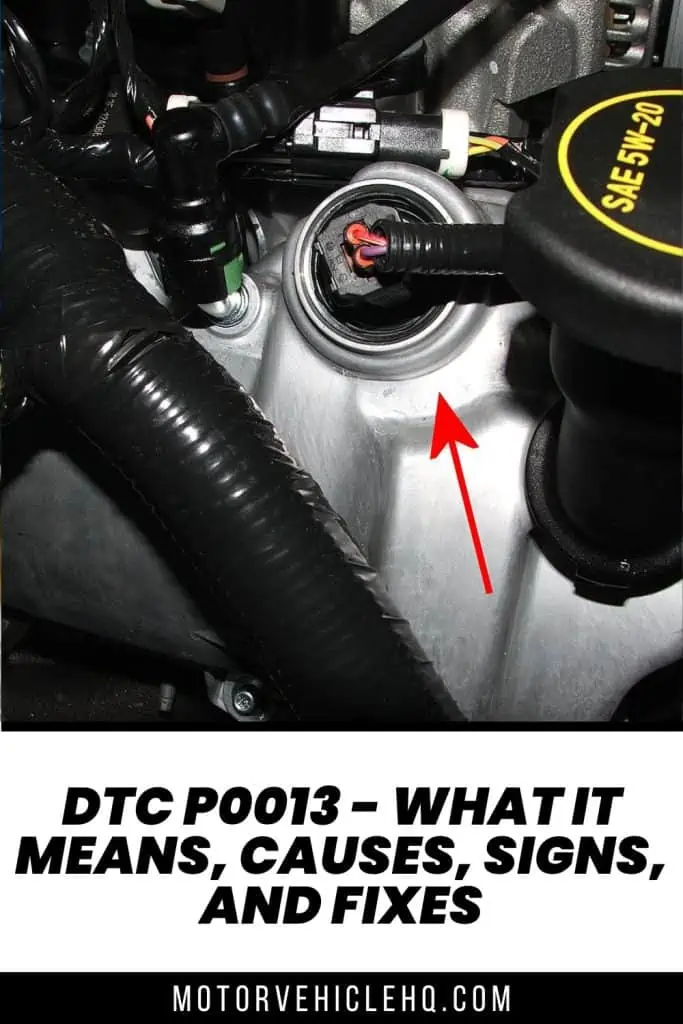
The variable camshaft timing solenoid by Metroplex~enwiki / CC BY-SA 3.0

Jim Wicks is the founder of MotorVehicleHQ. With over two decades of experience in the automotive industry and a degree in Automotive Technology, Jim is a certified car expert who has worked in various roles ranging from a mechanic, car dealership manager, to a racing car driver. He has owned more than 20 cars over the past 15 years. Ask him about any vehicle you see on the road and he can tell you the make, model and year. He loves the aesthetics of all things cars, and keeps his vehicles in pristine condition.
In his free time, Jim enjoys getting his hands dirty under the hood of a classic car or taking long drives along the country roads. His favorite car? A 1967 Shelby GT500, a true classic that, according to Jim, “represents the pure essence of American muscle.”
